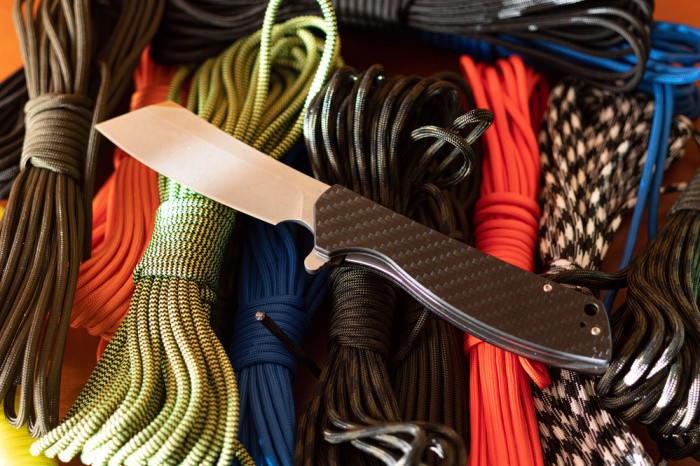10 Essential Ways to Prepare for Carbon Monoxide as a Prepper
As a prepper, ensuring your survival goes beyond stockpiling food and water. One often overlooked threat is carbon monoxide (CO), which is a colorless, odorless gas that can be lethal in high concentrations. When it comes to carbon monoxide exposure, the key element is prevention rather than protection. Due to the nature of the gas being an invisible gas and one with no fumes so you can’t smell it, it is often called the silent killer.
To make the most of your prepping and prevention strategy, here are 10 crucial ways to prepare for carbon monoxide as a prepper.

1. Recognizing the Dangers of Carbon Monoxide
Before taking any preventive measures, it’s essential to understand the dangers of carbon monoxide. CO is produced by incomplete combustion of fuels such as wood, gas, and oil. It displaces oxygen in the bloodstream, leading to potentially fatal consequences. Recognizing the sources and symptoms of CO poisoning is the first step in preparation. Safety Tips for Preppers: Ensuring Preparedness in Any Situation
2. Install Carbon Monoxide Detectors
Investing in carbon monoxide detectors is a non-negotiable component of your prepping arsenal. Place these devices strategically throughout your living spaces, paying particular attention to sleeping areas. Ensuring coverage in bedrooms, hallways, and common areas is vital. Regularly test and replace batteries in every CO detector to ensure these guardians are always ready to alert you to potential threats. Carbon Monoxide Detectors (hang on the wall) or Carbon Monoxide Detector PlugIns
A good rule of thumb is to change the batteries at the same time you change the batteries in your smoke detectors, unless the manufacturer’s instructions tell you to do it more often.
3. Maintain and Service Appliances Regularly
Preventive maintenance of your heating systems, generators, and other fuel-burning appliances is paramount. Schedule routine inspections and servicing of furnaces, gas clothes dryers, gas water heaters, and gas ranges and ovens by a qualified technician to identify and rectify any leaks or malfunctions promptly. Well-maintained equipment not only operates efficiently but also minimizes the risk of carbon monoxide emissions. 15 Kitchen Appliances That Save Time and Money
Natural gas is a fairly risk-free way to heat your home, cook your meals, and heat your water. There are few moving parts, other than the fan. We often take these reliable appliances for granted and forget that they need regular maintenance. You should also keep areas around these appliances clear of any clutter, stored gasoline, or other flammable materials.
4. Proper Ventilation
Ensure your living space is adequately ventilated to allow the dispersion of any potential carbon monoxide buildup. Proper airflow prevents the gas from accumulating to dangerous levels. Regularly clean vents and fireplace chimneys to facilitate unobstructed passage for exhaust gases through the flu. 20 Items For Emergency Cleaning Buckets
If you have a car running in your garage to warm it up, make sure the garage door is open and the door into the house is kept closed.
5. Sealing Gaps and Cracks
A well-sealed shelter is your first line of defense against external threats, including carbon monoxide infiltration. Regularly inspect windows, doors, and any potential entry points for gaps and cracks. Seal these openings using weather stripping or caulk to prevent CO from seeping into your living spaces. How To Be Prepared For Extreme Cold Weather
6. Educate Your Household
Empower every member of your household with knowledge about carbon monoxide risks and prevention. Teach them to recognize the symptoms of CO poisoning, the location and operation of detectors, and the importance of reporting any suspicious odors or symptoms immediately. Things To Do To Not Get Scared as a Prepper
7. Emergency Escape Plans
In the event of a carbon monoxide leak, having a well-thought-out escape plan can make the difference between life and death. Establish clear evacuation routes, designate meeting points, and practice emergency drills regularly. Preparedness is not just about having supplies, it’s about knowing how to respond effectively in a crisis. 8 Must-Haves for Choosing the Perfect Bug Out Location
8. Portable Detectors for Bug-Out Bags
As a prepper, you understand the importance of mobility. Include portable carbon monoxide detectors in your bug-out bags to ensure you’re protected even when on the move or in a shelter. Lightweight and compact detectors can be invaluable during outdoor activities or when seeking temporary shelter.
Likewise, if you’re staying in a tent or camper, don’t be tempted to use a kerosene space heater or one using propane. Even the use of white gas or propane lanterns in tents is a problem unless there’s plenty of ventilation. You may be tempted to use a charcoal grill in your tent or camper to cook meals. Not a good idea.
9. Alternative Heating Sources
When selecting alternative heating sources for your prepper setup, opt for models designed to minimize carbon monoxide emissions. Invest in appliances with built-in safety features and follow manufacturer recommendations for proper usage. So, always prioritize safety over convenience. How To Heat Your Home In An Emergency
10. Network with Like-minded Preppers
Exchange knowledge and experiences with other preppers in your community. Sharing insights about carbon monoxide preparedness can lead to valuable information and additional strategies to fortify your defenses. Establishing a network ensures that you’re prepared and contributing to the collective resilience of your prepping community. What You Need In A Community To Survive
How often should I test and replace detector batteries?
Test your carbon monoxide detectors monthly and replace the batteries at least once a year. It’s a good practice to replace the entire detector every five to seven years, even if it appears to be functioning correctly. Rather than taking a chance, it’s a lot easier to change batteries than experience CO poisoning.
What are the common symptoms of carbon monoxide poisoning?
Symptoms of carbon monoxide poisoning include headaches, dizziness, nausea, weakness, confusion, chest pain, shortness of breath, vomiting, and loss of consciousness. Because these symptoms can be mistaken for other illnesses, it’s crucial to have a carbon monoxide detector to identify potential exposure.
Make sure all family members are aware of these symptoms. They could experience the symptoms themselves or notice the symptoms in others, especially infants. There was a situation recently here in Utah where a faulty furnace at a local church caused over 25 churchgoers to get sick and need attention at a hospital. Someone in attendance noticed the symptoms and had the chapel evacuated before any others became sick.
More Tips
- Safety Tips for Preppers: Ensuring Preparedness in Any Situation
- 20 Healthy Habits for Emergency Preppers
- 20 Reasons to Have a Fire Extinguisher On Hand
Final Word
Survival as a prepper involves comprehensive preparation for many threats, including this silent threat. By taking the time to understand the risks, installing detectors, maintaining appliances, ensuring proper ventilation, educating your household, planning for emergencies, and networking with fellow preppers, you can enhance your prepping for this often underestimated danger. May God Bless this World, Linda






















Protection!!
We prepare for the worst disasters but we fail to prepare for something like home fires, carbon monoxide, etc. Well, Linda, not all of us fail to prepare!!
I lived in an apartment up until last August! It had smoke detectors (battery operated) and after doing some research, found that most of the well-known brands of smoke detectors fail to go off during an event such as a fire. They are great when dealing with cooking “smoke” but not necessarily during an actual fire. That was concerning to me. I found a company in my local area who sold packages of home protection: smoke/heat detectors, carbon monoxide detectors, water leak detectors and gas leak detectors. They were expensive but what is the price on being protected. Perhaps I was “taken” by my need to be/feel protected. Anyway…
So when I moved to my new location, there were no detectors at all!! No problem since I already had just about everything I needed. I installed the carbon monoxide detector first since this was the first time I had ever had to deal with natural gas! Then I put up the heat/smoke detectors in each room (by the way, these are also great at detecting cooking “smoke”!!). I placed the water leak detectors under the kitchen sink, the washer and gas water heater as well as just behind the toilet. The only kind of detector I was lacking was gas leak detectors. I did some research and found that many of the ones available locally were not of the highest quality. So I contacted the company and was able to purchase 3 gas leak detectors – one by the water heater, one in the kitchen and one by the gas heater that heats the whole little house!!
Perhaps this is over-kill but better safe than sorry. I feel protected and the only time any have gone off is when I was cooking something and the oil was smoking too much (still learning how to cook with gas!!). I opened the kitchen door, grabbed my broom to reach the button on the detectors and was able to turn them off. LOL!!
I do like the idea of a portable detector and will check it out. I always read reviews, though. It would be a good idea to check reviews on several different brands/models. One thing I like about this, is that when I travel, I won’t know if my friends/relatives or hotels/rooms will have all the protection I want. So I think a portable/travel detector would be a great thing to have!!
HI Leanne, you have been through two house fires as I remember so of course you totally understand the need for fire detectors. It sounds like you are totally set up for almost any kind of situation. About a week ago, my daughter was frying something and the smoke alarms went off and she has really tall ceiling so my son in law opened all the doors and they still kept ringing. He finally went out to the garage and got the leaf blower and pointed it towards the smoke alarm. Bam, it stopped. Funny, but it worked. Great tips, my friend! Linda